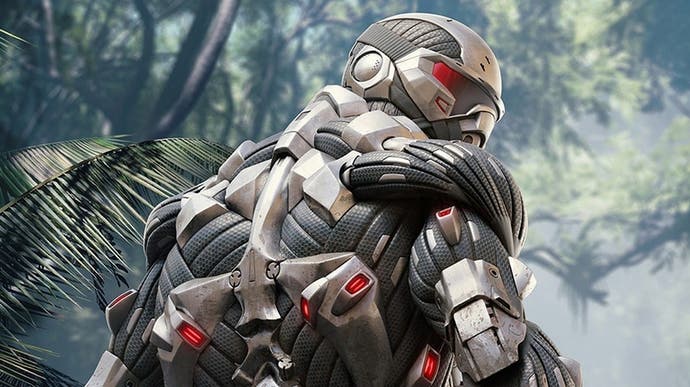Crysis Remastered on Switch: yes, a handheld really can run Crysis
The Digital Foundry tech review.
Can it run Crysis? It's been 13 years since Crytek's epoch-making release hit the market - and in some respects it's still capable of monstering modern day PC hardware. But now, the game is playable on a handheld console using a mobile processor with power consumption that barely troubles a watt meter. So just how good is the port? How does it compare to the sub-optimal last-gen versions and can it possibly match up to the original experience?
Much has been made of the leaked material for Crysis Remastered - with negative fan reaction causing Crytek to hold the game back for further tooling. However, the Switch version arrives on the original July 23rd release date and just from the first ten minutes of play, it's easy to see why. Based on the code available, and the sheer complexity of Crysis' systems, it's difficult to imagine a port that's anything better than what has been delivered here. It's not without its faults, but Crysis has been expertly retooled to scale graphically to the console hybrid - and it pushes Switch's ARM Cortex A57s to breaking point. It's a remarkable, fascinating port, but not without issues and strictly speaking not complete - the Ascension mission that's missing from the PS3 and Xbox 360 ports is still MIA here.
Let's start with the basics in taking a look at what Crytek and developer partner Saber Interactive has delivered. On Switch, Crysis Remastered uses dynamic resolution with temporal upscaling. Pixel counts suggest that 720p is the average resolution you'll experience during gameplay. In busy situations I counted resolutions such as 540p and even lower but this isn't especially common especially in docked mode. The resolution is capped at 720p in portable, of course, but can also jump slightly above this when docked. Based on information from the developer, the full dynamic resolution scaling range is 540p to 900p while docked, dropping to 400p to 720p in mobile configuration, where Crytek leans into the 460MHz 'power' GPU mode (up from the typical 384MHz used in most Switch games). The main takeaway is that image quality isn't bad - it's not pristine, but it's significantly better than the heavily blurred presentations seen in the likes of the id Tech 6 ports, The Witcher 3 and Warframe.
There are some noticeable omissions to the visual feature set (this is essentially a mobile port after all) - there's a reduction in geometry on elements like the nanosuit, an elimination of ray-marched volumetric light sources and parallax occlusion mapping, but there are dramatic upgrades too. We understand that the Xbox 360 and PlayStation 3 CryEngine 3 ports are the foundation on which Crysis Remastered is based, but side-by-side, it's clear that the Switch version looks significantly better in some respects. The first major shift stems from lighting: on the surface there are tweaks made to the time of day compared to the original game, along with the introduction of image-based lighting which helps with material quality - especially indirectly lit metals and plastics. However, the most significant and surprising addition here is sparse voxel-based global illumination, also known as SVOGI.
Essentially, global illumination is typically precalculated or 'baked' on most games. Instead, SVOGI delivers a real-time global illumination system that offers both ambient occlusion and indirect light bounce, delivering a standard of realism that easily eclipses the last-gen ports and indeed the lighting found in the PC original. It's surprising to see this on Switch but as I understand it, SVOGI is highly scalable. According to the team responsible for its conversion, this implementation of the systems runs at a very low resolution on Switch but the primary optimisation work centered around optimising data formats to reduce size, limiting the distance rays can be traced into the octree and using smaller kernels. Naturally, this reduces precision which can lead to more visible light leakage and light rippling in some cases but it still works surprisingly well. Presumably, the PC and other console releases will use higher precision.
This is perhaps the most significant improvement - it's Crytek making good on its promise to bring high-end CryEngine features from the latest iteration of the engine back into Crysis and it's fully armed and operational on Switch - even in handheld play. Beyond that, the rest of the lighting sees more subtle adjustments. Time of day tweaks can be seen in missions such as Assault where the sun rises much earlier on Switch than it does on PC. In general, most changes seem designed to create a more dramatic looking game - similar to many of the mods available for the original PC version. More importantly, the new lighting model more closely resembles that original PC version which cannot be said of the PlayStation 3 and 360 release. That version relies too heavily on strong bloom and blue-tinged colour grading. Throughout, it's a cold, harsh looking game that strays too far from the original for my tastes. Crysis Remastered is a huge improvement in that sense and the more immersive, naturally lit environment really pops.
The entire post-processing suite has been enhanced as well. Per-object and camera motion blur remains intact with a higher sample count than the previous console release. The PC version uses a different technique - it only applies motion blur to dynamic objects and camera rotation but not player movement so in that sense, Switch delivers an improvement all around. The bokeh depth of field used (most notably with iron sights) is also really impressive. It's an improvement both over the original release and the last-gen versions of the game.
Another key pillar on which Crysis is founded is destruction. The idea is that trees, bushes, and entire buildings interact and break apart based on your actions. Harking back to an era where video games went to extraordinary lengths to deliver realistic physics, destruction in Crysis was a remarkably impressive element which heightened combat and enabled some amazing moments. Impressively, everything is intact on Switch - but the fact that every feature is delivered means that there are some compromises. Objects and builds on just about every scale can break apart in real time, but this does cause momentary drops to frame-rate. Thankfully, this dissipates quickly so it's not a huge deal. I can't imagine Crysis without destructible buildings so it's worth the performance hit - and despite its meagre CPU resources, Switch still manages to outgun last-gen console frame-rates.
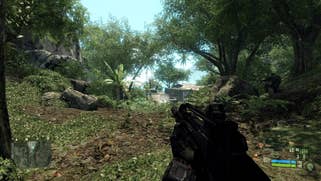
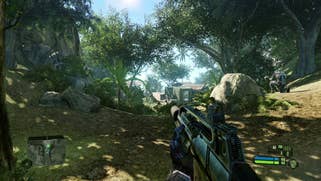


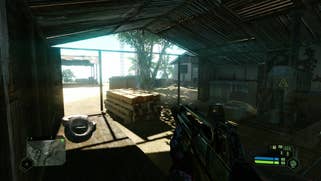
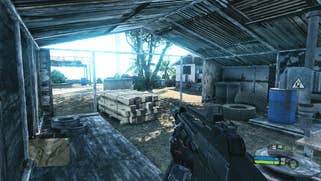
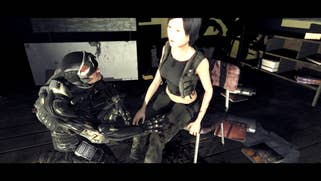



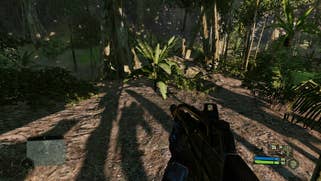
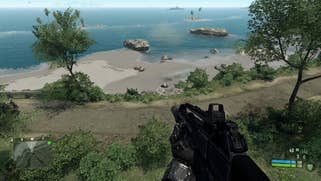
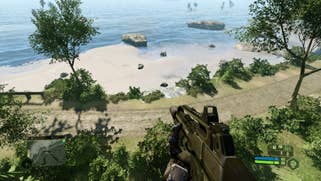
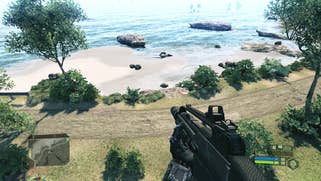
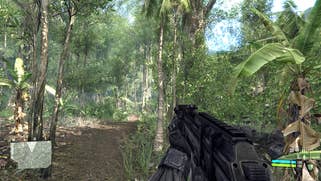
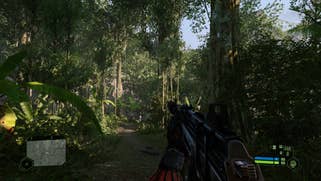

In delivering these features on Switch with just three available 1.0GHz mobile cores, there are also further compromises. As you blast palm trees and other flora, branches react to every shot but these interactions are time-sliced on Switch, updating at a lower rate than the main renderer. As a result, when you unload on a tree, it appears somewhat choppy. In comparison, the PC original and even the last-gen console versions of the game updates these interactions at full frame-rate. However, while we're on the subject of foliage, it's good to see that density in this respect is far closer to the original PC game than the rather sparse last-gen console releases: there's more grass, trees and bushes used throughout, just as you'd hope.
As for shadow rendering, the fidelity of shadow maps is reduced compared to the PC original with higher settings, as you'd expect, but CryEngine's method for shadow filtering saves the day here and even distant cascades are clean and devoid of artefacting. I still love the use of small bokeh shapes resulting from the filtering techniques used - this is a brilliant approach to handling lower resolution shadow maps as it lends these shadows a natural softness that is pleasing to the eye. Flashlight shadows are in the game as well but similar to PS3 and Xbox 360 versions, they are absent from the first stage for some reason. I do appreciate how, when using two flashlights, each beam projects shadows from the environment. I've already mentioned that parallax occlusion mapping is also removed on Switch - Crytek tells us that this requires too much power for mobile mode but may return at some point in a future patch, but only for docked play.
Beyond that, another key change lies in water rendering - Crysis Remastered makes the jump to the DX11-class water simulation featured in newer versions of CryEngine and the water surface itself is more visually pleasing as a result. Remarkably, computationally expensive planar reflections are still in use in for world reflections as well. However, the rendering of underwater areas has taken a noticeable hit compared to the original PC version. Basically, the rocks and plants featured beneath the ocean are completely absent, often leaving you with an empty sandy expanse instead, while the water caustic layer also has exhibits a visible cut-off line that you can see while swimming. You won't necessarily spend a lot of time underwater in Crysis so it's not a huge loss but it is curious to see.
Perhaps the most remarkable aspect of Crysis Remastered is that of all the impossible ports we've seen so far on Nintendo Switch, there's less of a sense that we're having to work with a vast array of technological cutbacks. Of course, part of this is down to the fact that fundamentally, the base game is 13 years old now, while the conversion is based on nine-year-old PS3/Xbox 360 code. But the point is that the remaster has been improved with modern, cutting-edge rendering techniques including temporal upscaling and dynamic resolution - and actual real-time global illumination. Aside from the resolution drop, the only difference between mobile and docked play is shadow map quality - and even then, the drop in fidelity in handheld mode is not much of an issue.
All of which bring us to the final, crucial aspect of the analysis: performance. Crysis is exceptionally heavy on the CPU - it always has been. Thankfully, the developers did have access to the last-gen console ports, which moved a game that operated mostly on a single core to leverage six available hardware threads (or SPUs in the case of PS3). Regardless, this still required extensive optimisation on Switch to deliver the same workloads using just three CPU cores. Occlusion culling - basically removing objects that you don't see from being rendered in the first place - was a CPU task on last-gen consoles, but on Switch it's moved to the GPU. Other tasks were sped-up simply by virtue of the fact that Switch has around 3.5GB of usable memory up against the mere 512MB of the PS3 and Xbox 360.
Even so, hitting CPU limits does impact performance - especially when engaging multiple enemy Ais while putting the physics system through its paces. Unsurprisingly, this is mostly evident in areas where the game was always heavy on the CPU, such as the village in the second mission, for example. Expect frame-rates in the low 20s when this happens, and sometimes even lower in Crysis' most packed combat scenes. With that said, the use of motion blur and triple buffering does mitigate some of the impact, but I would hope to see improvements here. In mission four, I actually noted that the game could freeze for a moment - Crytek says that this is a bug unrelated to CPU performance and will be fixed in the next patch.
Outside of the heaviest combat scenarios though, Crysis actually runs rather well. Even with its enhanced feature set and real-time global illumination system, it still manages to outperform the Xbox 360 and PlayStation 3 versions of the game. Much of the action plays out at 30 frames per second, and again, performance overall is much the same whether you're playing docked or in handheld mode. Crysis Remastered is CPU-limited in most scenarios and the Switch's ARM cores run at the same clocks whether you're playing docked or in mobile mode. However, even when running in optimal conditions, there is a problem: the frame-rate cap is actually 31fps, not 30fps. It may sound like a matter of little importance, but the whole reason 30fps is a developer choice at all is that new frames are synchronised with every other screen refresh - so it still looks smooth and consistent.
As things stand, an extra frame is added every 12th frame and even if the frame-rate is notionally higher, this adds unwelcome stutter. This seems to be an artefact of the last-gen versions of Crysis which mostly went unnoticed as performance was generally so poor - we only noticed it running under back-compat emulation on Xbox One where many of the bottlenecks are removed. However, it's a little disappointing that the same scenario is there on Switch. CryEngine titles like Homefront The Revolution and Crytek's own Hunt: Showdown deliver 30fps on console the way it should be - and Crytek tells us that they're looking into the issue here. Overall, performance isa mixed bag: it isn't exceptional but it's perfectly playable by Crysis standards and a far sight better than any other console release of any Crysis game and even at its worst, it's still generally on par with other examples of Switch's 'impossible ports'.
Beyond the visuals, Crysis Remastered also leans into Switch exclusive features. The game offers full support for gyro aiming, allowing you to more easily dial in your shots. The game controls surprisingly well in general, honestly. Crysis is an experience designed around the mouse and keyboard but the introduction of gyro aiming combined with snap targeting helps alleviate these issues. As expected, the game retains the same basic interface as the original console release as well. Suit powers are mapped to shoulder buttons - you can toggle between armour and stealth mode - while speed mode and strength mode are mapped to longer presses of the sticks. You jump higher via strength mode by holding down A, just as you did in the last-gen Crysis games. One thing that seemed a little odd to me is that walking speed seems a touch slow, while speed mode drains suit power and essentially rushes you into the next encounter. It doesn't feel quite right.
So at this point, we have a clear picture of what Crysis Remastered actually is on Switch. It's undoubtedly the best console port of the game released to date - until its Xbox One and PS4 siblings arrive, at least. Stacked up against Xbox 360 and PS3, it has the best image quality, vastly improved overall performance and the most impressive visuals. Yes, it's still missing features from the PC original and dropping parallax occlusion mapping is a shame but even considering Crysis' vintage, the basic concept of a Switch port of the game still seems insane, even before we factor in the new CryEngine features added here. Put simply, the porting team did a great job - but fundamentally, so did the original developers. Since the release of the original game, many folks have suggested that Crysis is nothing more than eye candy but I feel differently. Even today, this is a brilliant action game.
First and foremost, Crytek nailed the concept of scope. Crysis features massive maps to explore but it is not an open world game and this is fundamental. It's an example of wide-linear design - the beginning and end are fixed but the path to victory is open-ended. This is coupled with the special features of the nanosuit, allowing for a lot of flexibility in how you approach each skirmish. It's stealth and action but it's also everything in between - and it works. The stealth and the shooting still feel great but by adding in the physics, destruction and a wealth of vehicles and items, the player's toolbox is expanded, allowing for a lot of creativity along the way. It feels satisfying to try out an idea and have it all work out thanks to the systemic nature of the core game design.
Despite its more linear design, Crysis puts each of its maps to better use than any open world game I've played to date. When traversing the environments in Far Cry, most areas are ultimately just window dressing - they don't factor into your strategy and have little impact on the game. This is not the case with Crysis and it's fundamentally what makes it so special. Honestly, this is just scratching the surface but the point is this - Crysis itself remains a classic experience even to this day and even with the limitations of the Switch, it's absolutely worth checking out.
